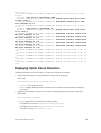
Figure 121. Uplink Failure Detection Example
If only one of the upstream interfaces in an uplink-state group goes down, a specified number of
downstream ports associated with the upstream interface are put into a Link-Down state. You can
configure this number and is calculated by the ratio of the upstream port bandwidth to the downstream
port bandwidth in the same uplink-state group. This calculation ensures that there is no traffic drops due
to insufficient bandwidth on the upstream links to the routers/switches.
By default, if all upstream interfaces in an uplink-state group go down, all downstream interfaces in the
same uplink-state group are put into a Link-Down state.
Using UFD, you can configure the automatic recovery of downstream ports in an uplink-state group
when the link status of an upstream port changes. The tracking of upstream link status does not have a
major impact on central processing unit (CPU) usage.
UFD and NIC Teaming
To implement a rapid failover solution, you can use uplink failure detection on a switch with network
adapter teaming on a server.
For more information, refer to NIC Teaming.
For example, as shown previously, the switch/ router with UFD detects the uplink failure and
automatically disables the associated downstream link port to the server. To continue to transmit traffic
upstream, the server with NIC teaming detects the disabled link and automatically switches over to the
backup link in order.
Important Points to Remember
When you configure UFD, the following conditions apply.
• You can configure up to 16 uplink-state groups. By default, no uplink-state groups are created.
– An uplink-state group is considered to be operationally up if it has at least one upstream interface
in the Link-Up state.
Uplink Failure Detection (UFD)
905


















